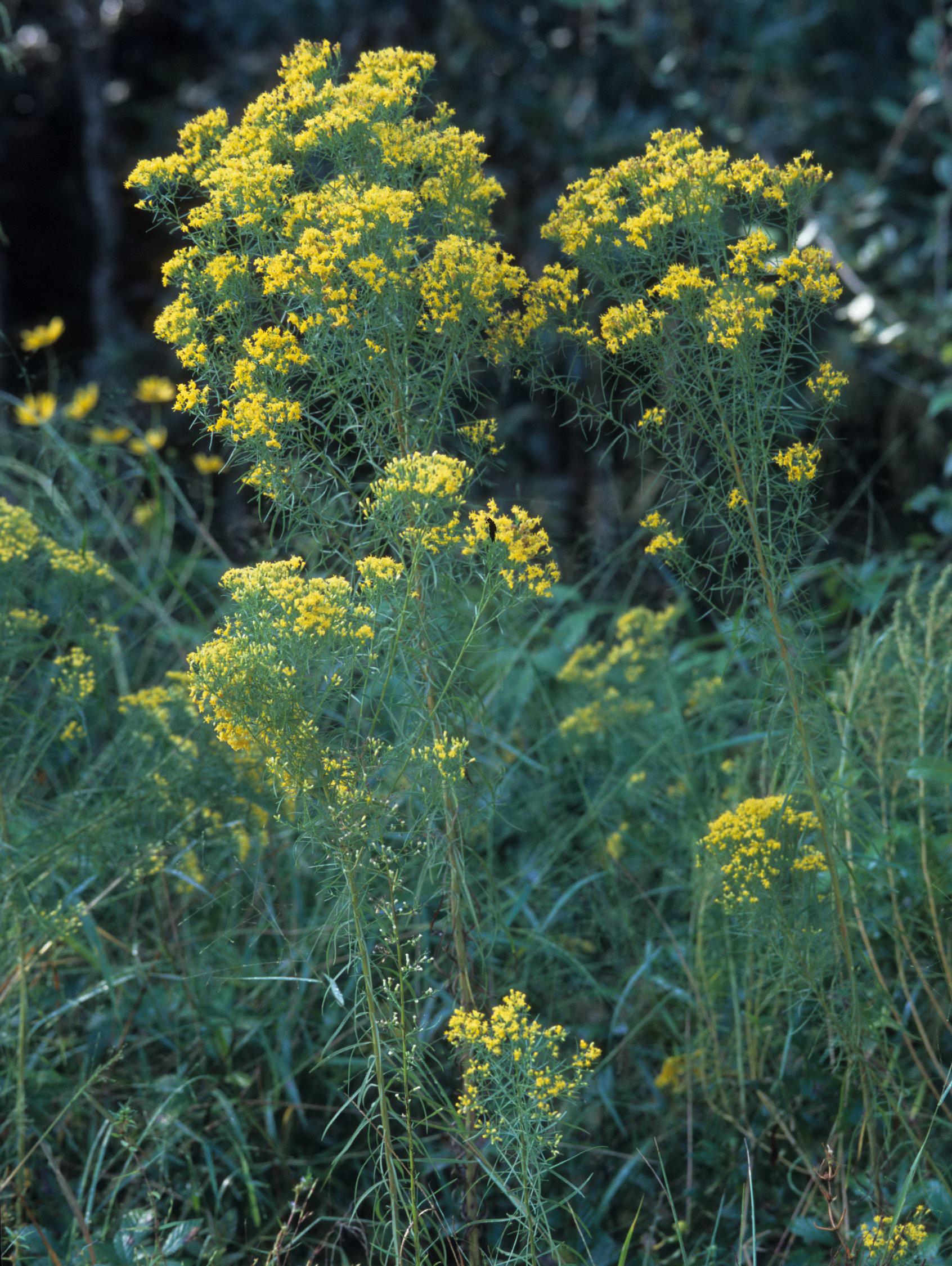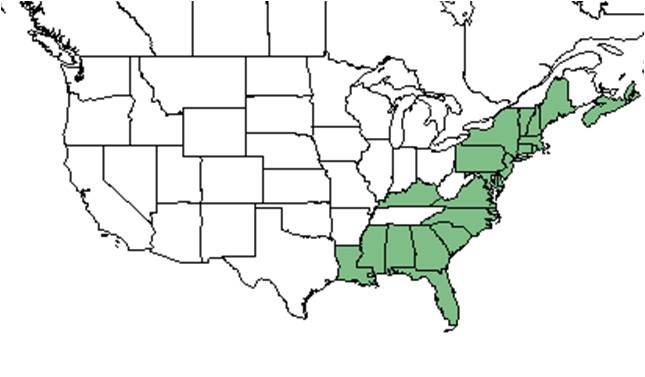Euthamia caroliniana
| Euthamia caroliniana | |
|---|---|

| |
| Photo taken by Gil Nelson | |
| Scientific classification | |
| Kingdom: | Plantae |
| Division: | Magnoliophyta - Flowering plants |
| Class: | Magnoliopsida - Dicotyledons |
| Order: | Asterales |
| Family: | Asteraceae ⁄ Compositae |
| Genus: | Euthamia |
| Species: | E. caroliniana |
| Binomial name | |
| Euthamia caroliniana (L.) Greene ex Porter & Britton | |

| |
| Natural range of Euthamia caroliniana from USDA NRCS Plants Database. | |
Common names: Slender goldentop; Slender flattop goldenrod; Coastal Plain goldentop
Contents
Taxonomic notes
Synonyms: Solidago microcephala (Nuttall) Bush; Solidago tenuifolia Pursh; Euthamia tenuifolia (Pursh) Nuttall var. microcephala Nuttall; E. tenuifolia var. tenuifolia; Solidago tenuifolia var. tenuifolia; Solidago tenuifolia; E. tenuifolia; E. minor (Michaux) Greene; E. minor; E. tenuifolia (Pursh) Nuttall
Description
A description of Euthamia caroliniana is provided in The Flora of North America.
Distribution
E. caroliniana is distributed from southern Maine south to southern Florida and west to southeastern Louisiana, and mainly along the southeast coastal plain. However, its distribution does extend into the Piedmont in some areas.[1] It is also native to the Nova Scotia province in Canada.[2]
Ecology
Habitat
Generally, E. caroliniana is found in moist forests, pine savannas, pastures, ditches, and other disturbed areas.[1]
Phenology
It generally flowers from September to December as well as sometimes in August.[1] E. caroliniana has been observed to flower in September and October.[3]
Seed dispersal
This species is thought to be dispersed by wind. [4]
Seed bank and germination
Forms a persistent soil seed bank. [5]
Pollination
The following Hymenoptera families and species were observed visiting flowers of Euthamia caroliniana at Archbold Biological Station. [6]
Andrenidae: Andrena fulvipennis
Apidae: Apis mellifera, Bombus impatiens, Epeolus carolinus
Colletidae: Colletes mandibularis, C. simulans, C. thysanellae, Hylaeus confluens
Halictidae: Agapostemon splendens, Augochlorella aurata, Halictus poeyi, Lasioglossum nymphalis, L. placidensis, L. puteulanum, Sphecodes heraclei
Leucospidae: Leucospis affinis, L. affinis, L. robertsoni, L. slossonae
Megachilidae: Anthidiellum perplexum, Coelioxys dolichos, C. octodentata, C. sayi, Megachile albitarsis, M. mendica
Pompilidae: Anoplius atrox, A. marginalis, Paracyphonyx funereus
Sphecidae: Ammophila pictipennis, Anacrabro ocellatus, Bembix sayi, Cerceris blakei, Ectemnius rufipes ais, Epinysson mellipes, Isodontia exornata, Liris beata, Microbembex monodonta, Palmodes dimidiatus, Philanthus politus, P. ventilabris, Prionyx thomae, Tachysphex similis, Tachytes validus
Vespidae: Euodynerus boscii boharti, E. hidalgo, Pachodynerus erynnis, Parancistrocerus salcularis rufulus, Polistes bellicosus, P. carolina, P. dorsalis hunteri, P. fuscatus, P. perplexus, Zethus slossonae, Z. spinipes
Conservation and management
Cultivation and restoration
Photo Gallery
References and notes
- ↑ 1.0 1.1 1.2 Weakley, A. S. (2015). Flora of the Southern and Mid-Atlantic States. Chapel Hill, NC, University of North Carolina Herbarium.
- ↑ USDA, NRCS. (2016). The PLANTS Database (http://plants.usda.gov, 13 May 2019). National Plant Data Team, Greensboro, NC 27401-4901 USA.
- ↑ Nelson, G. PanFlora: Plant data for the eastern United States with emphasis on the Southeastern Coastal Plains, Florida, and the Florida Panhandle. www.gilnelson.com/PanFlora/ Accessed: 9 DEC 2016
- ↑ Kirkman, L. Katherine. Unpublished database of seed dispersal mode of plants found in Coastal Plain longleaf pine-grasslands of the Jones Ecological Research Center, Georgia.
- ↑ Navarra, J. J., N. Kohfeldt, et al. (2011). "Seed bank changes with time since fire in Florida rosemary scrub." Fire Ecology 7(2).
- ↑ Deyrup, M.A. and N.D. 2015. Database of observations of Hymenoptera visitations to flowers of plants on Archbold Biological Station, Florida, USA.